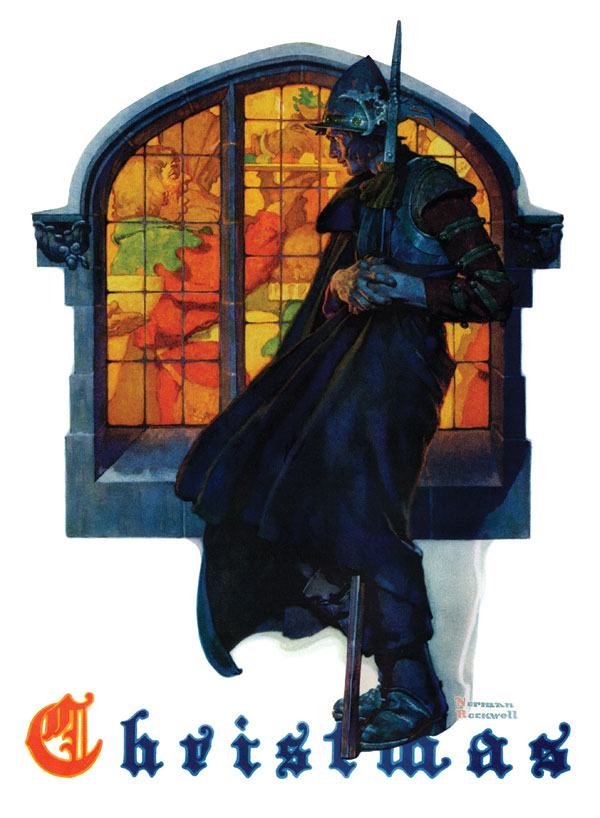
Norman Rockwell
December 6, 1930
Get this framed at Art.com
Returning home to New York from the Philadelphia offices of The Saturday Evening Post in 1930, Norman Rockwell was a happy man. Editor George Horace Lorimer had OK’d the artist’s sketch for the December 6, 1930, Christmas cover.
Lorimer’s initials “GHL” gave the artist the green light to assemble models and start the painting as soon as he arrived back in his studio. The illustration was to feature the word “Christmas” below two 16th-century guards breaking protocol by dancing in the snow while observing indoor festivities at a roadside inn.
But as Norman positioned props and began the project, he noticed that his two models—Walter Botts and Rockwell’s ex-brother-in-law and close friend, Howard O’Connor—weren’t enthused about the idea. Truth be told, Rockwell’s own passion for the project was also waning.
With the Great Depression now in its 10th month, American citizens were struggling. The revelry in the proposed scene seemed wrong. Rockwell decided to change the idea, and he invited his models and his wife Mary to speak up. Mary underscored how inspirational her husband’s covers were to American families all across the country, how it was his responsibility to lift them up in hard times. Then Walter chimed in with the story of his parents’ hospitality. They were innkeepers in Sullivan, Indiana, providing shelter and food to homeless job-seekers.
That story triggered an idea. Walter would pose as this lone, cold, 16th-century guard standing outside a roadside inn, peering through a depressed arch window at those celebrating the Christmas season. The focus shifted perspective from the haves to the have-nots. When the message reached Lorimer, he quickly approved the change.
Editor’s note: We’ve gathered 114 spectacular Christmas illustrations by Rockwell and other beloved artists from The Saturday Evening Post in a special 128-page holiday edition of the magazine on sale now!
Become a Saturday Evening Post member and enjoy unlimited access. Subscribe now



